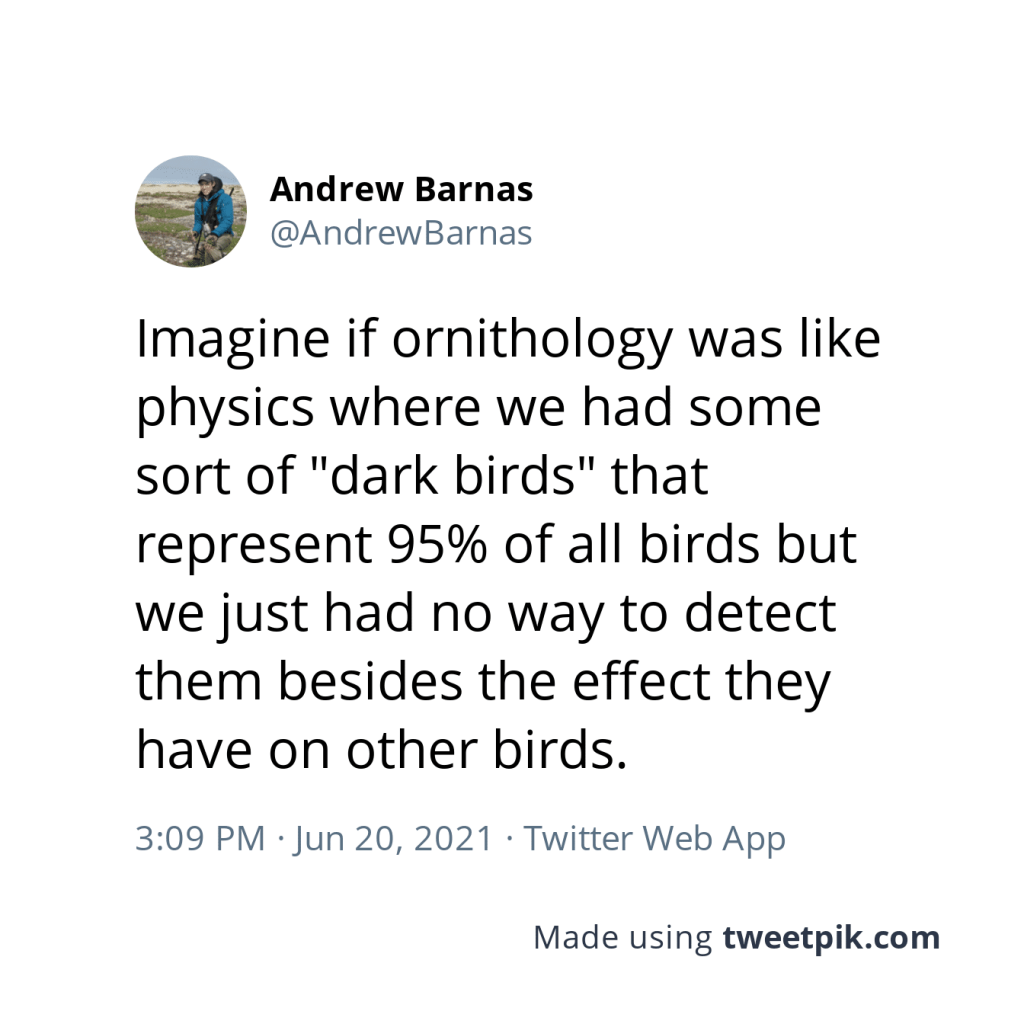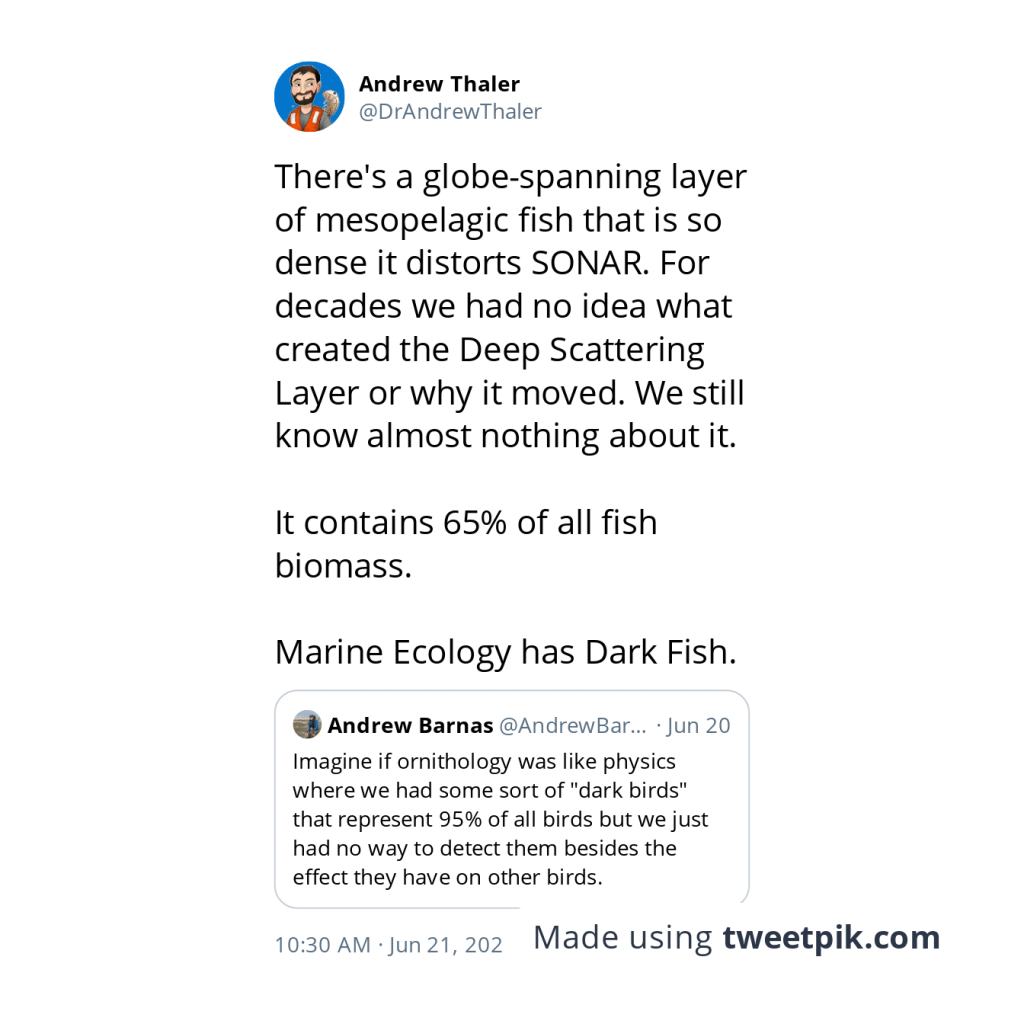
And a follow up from Dr Andrew Thaler, deep-sea ecologist and population geneticist:

Now, I’ve written about a different kind of dark fish known as “vantafish” but these dark fish are extra special. According to Dr Thaler and this post from Phys.org, 65%–95% of all fish biomass may hide in a mesopelagic zone, an area between 100–1000m below the surface.
Professor Carlos Duarte, a marine biologist and Distinguished Professor at the King Abdullah University of Science and Technology, led a seven-month team circumnavigation of the globe collecting echo-soundings of mesopelagic fish where he found that they were able to detect nets from at least five metres making catches for biomass calculations difficult, hence the wide estimates.
(h/t @PublicStilli)
Filed under: animals aquatic ecology ecology marine biology social media